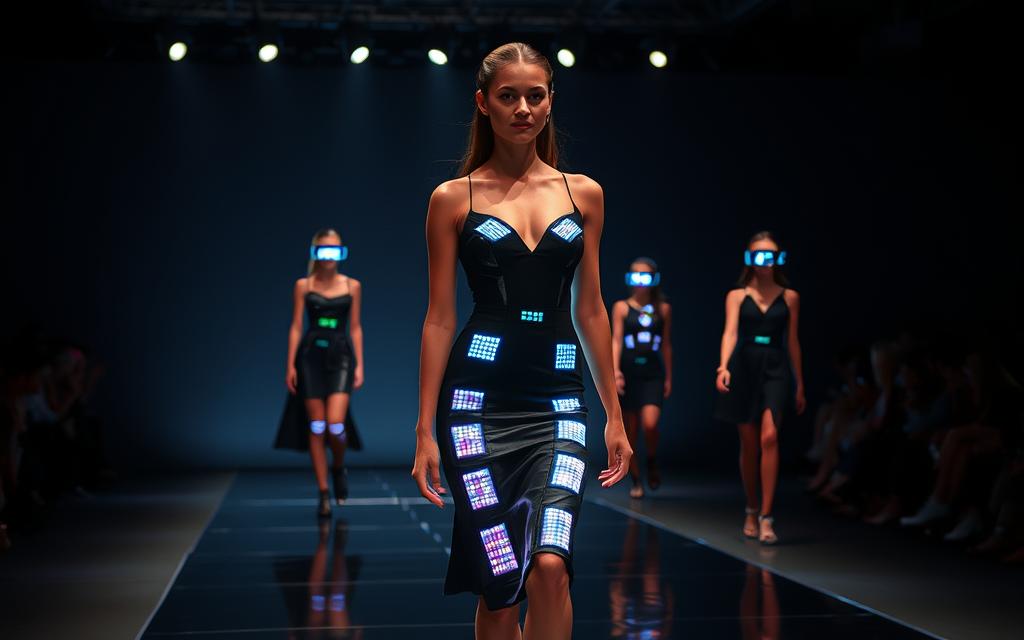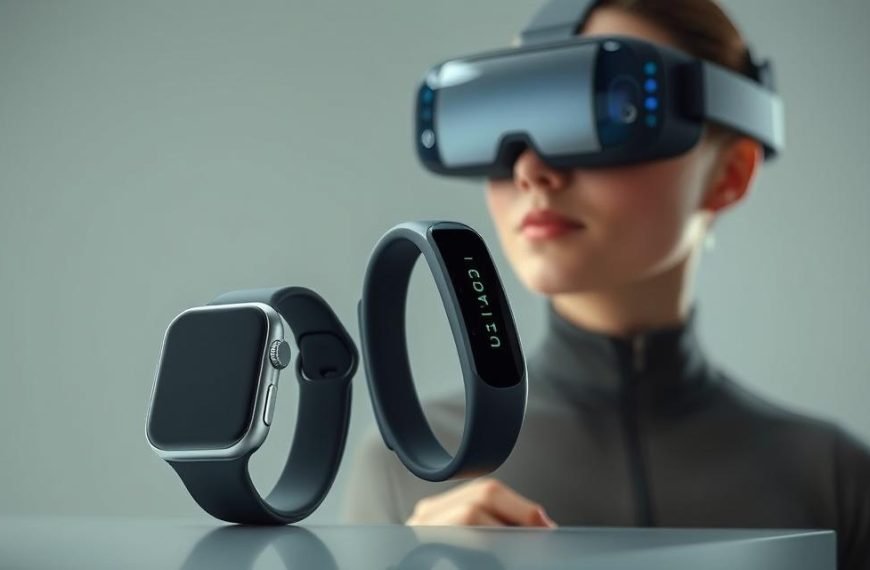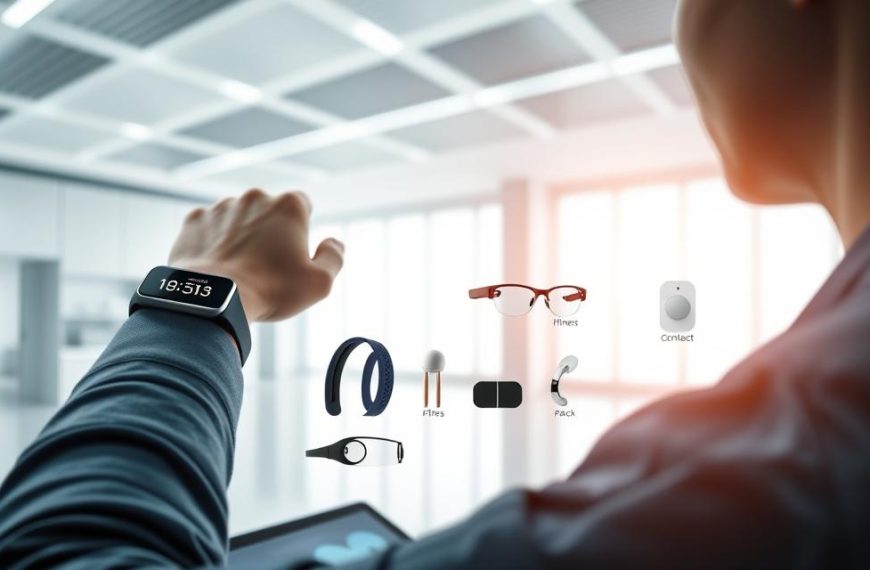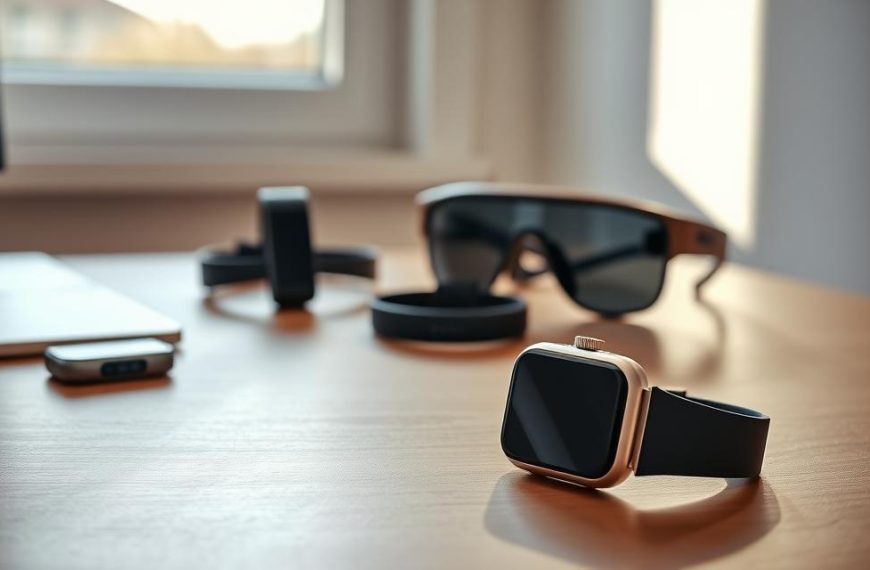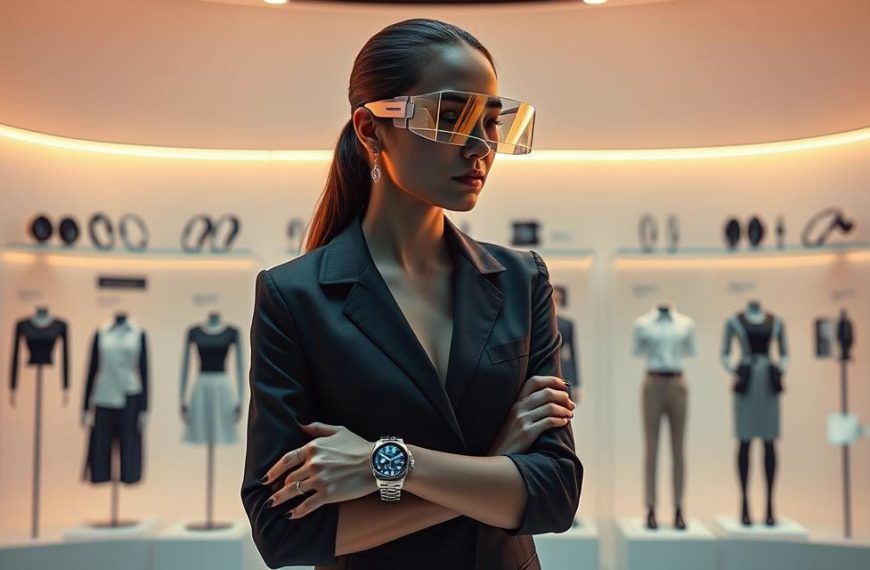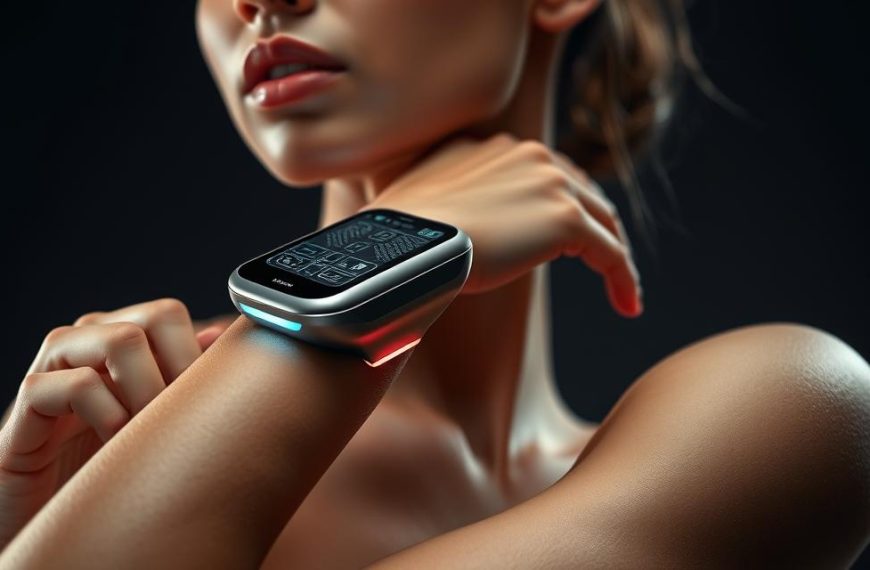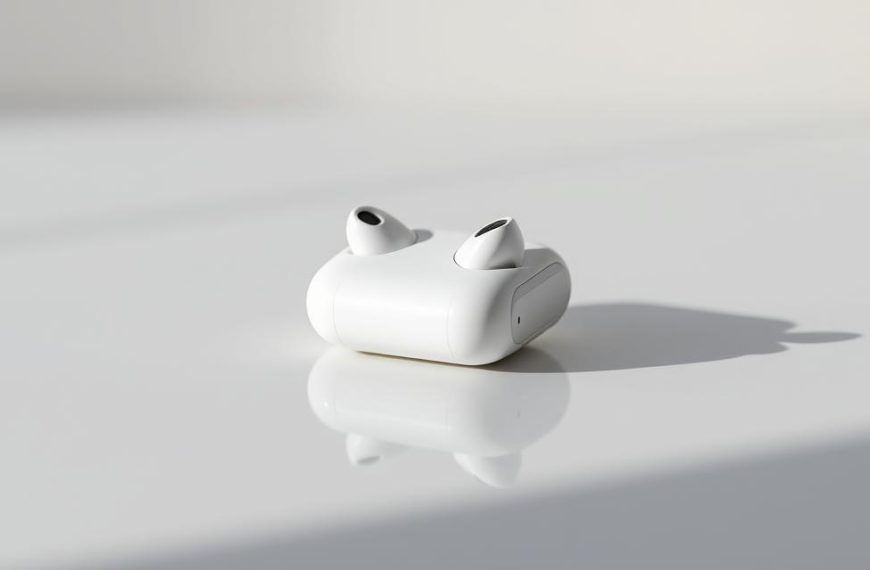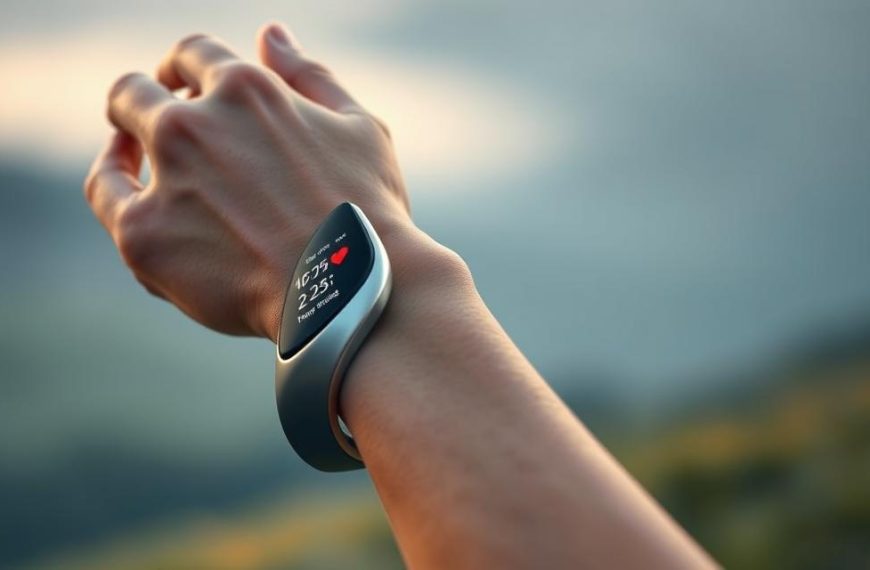Wearable tech is reshaping the fashion world, blending functionality with style. From smart fabrics to augmented reality (AR) shopping, these innovations are transforming how consumers interact with clothing. Ford’s prototype smart jacket, designed for cyclists, integrates navigation directly into the garment, showcasing the potential of tech-infused apparel.
Brands like Dior are leveraging AR to offer virtual try-on experiences, making shopping more interactive and personalized. Meanwhile, collaborations like SPIBER and North Face are pushing boundaries with synthetic spider silk, emphasizing sustainability and durability.
As wearable tech evolves, it bridges the gap between practicality and aesthetics. However, challenges like privacy concerns and accessibility remain. This intersection of fashion and technology promises a future where clothing is not just about looks but also about enhancing everyday life.
Introduction to Wearable Technology in Fashion
The fusion of tech and style is redefining modern apparel. Wearable technology, once limited to fitness trackers, now includes advanced e-textiles and smart garments. These innovations are transforming the way we interact with clothing, blending practicality with aesthetics.
Early adopters like Maker’s Row have paved the way for tech-integrated apparel. What began as gimmicks, such as light-up clothing, has evolved into functional enhancements. Today, athletic wear with biometric sensors monitors heart rate and activity levels, offering real-time health insights.
The concept of a “smart wardrobe” is gaining traction. Designers are creating products that adapt to user needs, from temperature-regulating fabrics to self-cleaning materials. This shift highlights the growing intersection of innovation and functionality in the fashion industry.
In 2023, the market for tech-infused clothing reached $1.74 billion, reflecting its rapid growth. This article explores the technical and design aspects driving this evolution, showcasing how wearable technology is reshaping the apparel landscape.
The Evolution of Wearable Technology
From clunky prototypes to sleek, integrated designs, wearable tech has come a long way in blending innovation with style. Its journey spans decades, marked by groundbreaking advancements that have reshaped the way we think about clothing and accessories.
From Early Innovations to Modern Marvels
The roots of wearable tech trace back to the 1960s, with primitive devices like calculator watches. These early gadgets were bulky and limited in functionality, but they laid the foundation for future breakthroughs.
By the 2000s, microelectronics enabled seamless integration of tech into apparel. This era saw the rise of fitness trackers like Fitbit, which revolutionized health monitoring. Today, advancements in conductive thread and material science have made washable electronics a reality.
- 3D printing has transformed prototyping, allowing designers to create smart garments with precision.
- Brands like WHOOP have pushed biometrics to new heights, offering advanced health insights.
- Energy-harvesting fabrics, introduced in 2024, promise a sustainable future for tech-infused clothing.
The shift from separate devices to clothing-integrated systems highlights the ongoing evolution of wearable tech. As production methods improve, the possibilities for fashion design continue to expand, blending aesthetics with cutting-edge functionality.
How Has Wearable Technology Changed the Fashion Industry?
The integration of advanced tech into apparel is revolutionizing consumer experiences. From virtual fitting rooms to smart fabrics, these innovations are reshaping the way we interact with clothing. The impact is evident across design, production, and retail.
One notable trend is the use of AR virtual fitting rooms, which have reduced fashion returns by 73%. This technology allows shoppers to visualize how garments will look and fit before purchasing, enhancing convenience and reducing waste. Similarly, smart manufacturing processes have cut textile waste by 40%, according to Maker’s Row.
Personalization is another key area. Body-scanning tech now enables brands to create custom-fit clothing, catering to individual preferences. Temperature-regulating fabrics are also gaining popularity, allowing consumers to expand their capsule wardrobes with versatile pieces.
On the runway, LED-embedded designs made a splash at Paris Fashion Week 2024, showcasing the fusion of style and innovation. RFID tags are another example, enabling circular fashion initiatives by tracking garments throughout their lifecycle.
- Ralph Lauren’s self-heating winter jackets demonstrate practical applications of tech in apparel.
- 58% of luxury brands now offer tech-enhanced accessories, blending elegance with functionality.
- Fast fashion brands are adopting wash cycle sensors to improve garment longevity.
These advancements highlight the growing focus on sustainability and reducing waste. As the industry evolves, tech continues to bridge the gap between style and practicality, offering consumers smarter, more eco-friendly choices.
Smart Fabrics: The Future of Fashion
Smart fabrics are redefining the boundaries of modern apparel, merging innovation with everyday wear. These advanced textiles integrate technology to enhance functionality, comfort, and style. From health monitoring to thermal regulation, they are transforming how we interact with clothing.
What Are Smart Fabrics?
Smart fabrics are materials embedded with sensors, conductive polymers, or other technologies. They respond to environmental changes or user inputs, offering features like touch-responsive surfaces or automatic temperature control. For example, phase-change materials adjust to body heat, ensuring optimal comfort.
One groundbreaking example is microbial cellulose, used in biofabrication by companies like Modern Meadow. This material mimics natural fibers while offering enhanced durability and sustainability. Such innovations highlight the potential of smart fabrics to revolutionize the textile industry.
Applications in Modern Apparel
Smart fabrics are making waves across various sectors. In healthcare, post-surgical compression garments with healing monitors track recovery progress. These garments provide real-time data, improving patient outcomes and reducing hospital visits.
In high fashion, brands like CuteCircuit have introduced the Twitter Dress, which displays tweets in real-time. This blend of creativity and technology showcases the limitless possibilities of textiles in modern design.
- Military applications include flame-resistant clothing with hazard detection systems, enhancing safety for personnel.
- Nike’s 2024 Adapt Auto Max shoes feature self-lacing technology, combining style with performance.
- Collaborations like Mycoworks’ mushroom leather emphasize sustainability, offering eco-friendly alternatives to traditional materials.
Despite their potential, challenges like washability remain. However, advancements in material science are addressing these issues, paving the way for widespread adoption. As artificial intelligence continues to evolve, the future of smart fabrics looks brighter than ever.
Wearable Fitness Trackers: Beyond the Basics
Fitness trackers have evolved into sophisticated health tools, blending style with advanced functionality. No longer limited to counting steps, these devices now offer comprehensive insights into our well-being. The market for these gadgets continues to grow, driven by innovations in health monitoring and user-friendly design.
From Step Counters to Health Monitors
Early fitness trackers focused on basic metrics like steps and calories. Today, they provide detailed data on heart rate, sleep quality, and even stress levels. Devices like WHOOP 4.0 monitor strain and recovery 24/7, offering actionable insights for users.
Premium smartwatches now include ECG capabilities, enabling users to track heart health in real-time. UV monitoring in outdoor apparel and recovery-focused compression wear with EMS technology further expand the possibilities. These advancements highlight the shift from simple activity tracking to holistic health management.
Fashion Meets Functionality
Leading brands are merging style with technology, creating fitness trackers that complement everyday wear. The Oura Ring, for instance, partnered with Gucci to offer luxury sleep tracking. Similarly, Tag Heuer collaborated with Apple to launch the Apple Watch Ultra, blending high-end design with cutting-edge features.
Lululemon’s sweat-wicking fabrics with motion sensors and battery life advancements enabling 30-day wearables are pushing the boundaries of innovation. These developments cater to consumers seeking both functionality and aesthetic appeal.
| Brand | Model | Key Features |
|---|---|---|
| WHOOP | 4.0 | 24/7 strain/recovery monitoring |
| Oura | Ring | Luxury sleep tracking |
| Apple | Watch Ultra | ECG, designer collaboration |
| Lululemon | Motion Sensors | Sweat-wicking fabrics |
As fitness trackers continue to evolve, ethical considerations in data collection remain a priority. Users demand transparency and security, ensuring their personal information is protected. This balance of innovation and responsibility will shape the future of these devices.
Smartwatches: A New Era of Timekeeping
Smartwatches are redefining timekeeping by merging advanced tech with everyday functionality. These devices have evolved from simple time-tellers to multifunctional tools that enhance productivity, health, and style. With features like heart rate monitoring, GPS, and mobile payments, they are becoming indispensable in modern life.
More Than Just a Watch
Today’s smartwatches go beyond traditional timekeeping. They serve as health monitors, fitness coaches, and even personal assistants. For example, Garmin’s solar-powered models are mariner-approved, offering durability and extended battery life. Similarly, G-Shock combines mud resistance with Bluetooth connectivity, catering to outdoor enthusiasts.
Battery innovation is another key focus. Graphene cells with 100mAh capacity are pushing the boundaries of longevity. Privacy-focused models with local data storage are also gaining traction, addressing user concerns about data security.
Luxury Meets Technology
The luxury segment is embracing smartwatches, blending high-end materials with cutting-edge tech. Cartier’s gold-smartwatch fusion exemplifies this trend, offering elegance and functionality. Montblanc’s Summit 3 features mechanical hands paired with a digital hybrid display, appealing to traditional watch enthusiasts.
Emerging markets are driving growth, with the $500+ segment expanding by 22% year-over-year. Secondary markets for pre-owned smartwatches are also thriving, reflecting their enduring appeal.
| Brand | Model | Key Features |
|---|---|---|
| Garmin | Solar-Powered | Mariner-approved, extended battery |
| G-Shock | Mud Resistance | Bluetooth connectivity, durability |
| Cartier | Gold-Smartwatch | Luxury materials, advanced tech |
| Montblanc | Summit 3 | Mechanical hands, digital hybrid |
As smartwatches continue to evolve, they are setting new standards for functionality and style. From fitness tracking to luxury design, these devices are reshaping how we interact with timekeeping technology.
Designer Collaborations: Bridging Fashion and Tech
Collaborations between designers and tech companies are pushing the boundaries of modern apparel. These partnerships blend creativity with cutting-edge technology, resulting in products that are both functional and stylish. From smart jackets to 3D-printed couture, these innovations are reshaping the industry.
Innovative Partnerships
One standout example is the Google x Levi’s Commuter Trucker Jacket. This jacket integrates touch-sensitive fabric, allowing users to control their devices with a swipe. It’s a perfect blend of practicality and style, showcasing the potential of tech-infused apparel.
Tommy Hilfiger’s solar-powered outerwear line is another groundbreaking innovation. These garments harness solar energy to charge devices, making them ideal for outdoor enthusiasts. Such products highlight the growing synergy between fashion and technology.
Startups are also making waves. LOOMIA’s collaboration with Coach resulted in a smart handbag that tracks its contents. These partnerships demonstrate how smaller companies can drive significant change in the industry.
Tech on the Runway
High fashion is embracing technology in bold ways. Iris van Herpen’s 3D-printed couture collections are a prime example. Her designs merge traditional craftsmanship with futuristic techniques, creating pieces that are both artistic and innovative.
Dior’s AR makeup try-on mirrors are transforming the shopping experience. These installations allow customers to virtually test products, enhancing convenience and personalization. Similarly, Balenciaga’s VR fashion shows offer immersive experiences, redefining how audiences engage with brands.
Prada’s blockchain-authenticated accessories ensure transparency and authenticity. This innovation addresses counterfeiting while adding a tech-forward edge to their fashion design.
Despite these advancements, regulatory challenges remain. Cross-industry partnerships often face hurdles in compliance and intellectual property. However, these collaborations continue to pave the way for a more integrated future.
Retail Innovations: Enhancing the Shopping Experience
Retail spaces are transforming with tech-driven innovations, offering consumers a seamless shopping journey. From virtual try-ons to AI-powered recommendations, these advancements are reshaping the way people interact with brands. The integration of digital tools into physical stores is creating a more personalized and efficient experience.
Smart Mirrors and Virtual Try-Ons
Smart mirrors and virtual try-ons are revolutionizing the fitting room experience. Neiman Marcus’s MemoryMirror allows shoppers to see themselves in different outfits without changing clothes. Similarly, Zara’s AI-powered style assistant suggests outfits based on user preferences, blending reality with digital convenience.
Body scanning booths with 98% measurement accuracy are also gaining traction. These tools reduce returns by ensuring the perfect fit. Virtual showrooms are another trend, minimizing sample production and waste. These innovations highlight the growing synergy between tech and retail.
AI and Personalized Recommendations
AI is playing a pivotal role in enhancing the shopping experience. Shopify AR’s 3D product visualization tools allow consumers to explore items in detail before purchasing. Predictive analytics are also being used to forecast trends, helping brands stay ahead in the market.
RFID-enabled inventory systems ensure accurate stock tracking, while NFC chips authenticate products, addressing counterfeiting concerns. However, ethical considerations around data usage remain a priority. Transparency and security are essential to maintaining consumer trust.
| Innovation | Brand | Feature |
|---|---|---|
| Smart Mirrors | Neiman Marcus | Virtual try-ons |
| AI Assistant | Zara | Personalized styling |
| 3D Visualization | Shopify AR | Interactive product exploration |
| RFID Systems | Various | Inventory management |
As retail continues to evolve, these innovations are setting new standards for convenience and personalization. The future of shopping lies in the seamless integration of tech and reality, offering consumers a more engaging and efficient experience.
Health and Wellness: The Benefits of Wearable Tech
Wearable innovations are revolutionizing personal health and wellness, offering tools that go beyond traditional methods. These devices provide real-time insights, empowering users to take control of their well-being. From tracking vital signs to detecting potential health risks, the possibilities are endless.
Continuous Health Monitoring
One of the most significant advancements is continuous health monitoring. Products like Hexoskin’s FDA-cleared cardiac monitoring shirts track heart activity, offering peace of mind for users with chronic conditions. Similarly, Sensoria’s neuropathy-detecting socks help manage diabetes by identifying early signs of foot complications.
AI-powered fall detection systems in elderly wearables are another breakthrough. These technologies alert caregivers during emergencies, ensuring timely intervention. Stress-level tracking through galvanic skin response is also gaining popularity, helping users manage their mental health effectively.
Preventive Healthcare
Wearable tech is also transforming preventive healthcare. UV exposure monitoring in swimwear protects users from harmful rays, while posture correction systems in office wear promote better ergonomics. Fertility tracking through basal temperature garments is another innovative application, offering a non-invasive way to monitor reproductive health.
In clinical trials, remote patient monitoring is streamlining research processes. However, challenges remain, particularly in the insurance industry, where adoption barriers persist. Despite this, the potential for these devices to improve health outcomes is undeniable.
“Wearable technology is enhancing clinicians’ treatment and management of health conditions,” according to advances in wearable tech for fashion, health, and.
- Hexoskin’s FDA-cleared cardiac monitoring shirts
- Sensoria’s neuropathy-detecting socks
- AI-powered fall detection in elderly wearables
- Stress-level tracking through galvanic skin response
- UV exposure monitoring in swimwear
- Posture correction systems in office wear
- Fertility tracking through basal temperature garments
- Clinical trial applications: remote patient monitoring
- Insurance industry adoption challenges
Challenges in Wearable Technology
The rise of tech-infused apparel brings both opportunities and hurdles. While innovation continues to push boundaries, several challenges hinder its widespread adoption. These issues range from technical limitations to accessibility concerns.
Technical Limitations
One major issue is the durability of smart fabrics. Many garments can only withstand an average of 25 wash cycles before their functionality degrades. Embedded systems, such as batteries, face replacement complexities, making repairs costly and inconvenient.
Waterproofing is another hurdle. While IP67 standards are common, woven electronics often struggle to meet these requirements. This limits their use in environments where moisture is a factor.
High Costs and Accessibility
The cost of tech-enabled apparel remains a barrier. Smart jackets, for instance, average $350 or more, pricing them out of reach for many consumers. Repair infrastructure is also lacking, making maintenance difficult.
Data security is a growing concern. Bluetooth-connected garments are vulnerable to hacking, raising privacy issues. Additionally, supply chain disruptions for rare earth minerals further complicate production.
| Challenge | Example |
|---|---|
| Durability | 25-cycle wash limit |
| Cost | $350+ smart jackets |
| Security | Bluetooth vulnerabilities |
| Accessibility | Repair infrastructure gaps |
Standardization is another pressing issue. Charging systems vary widely, creating confusion for users. In developing markets, the digital divide exacerbates these concerns, limiting access to tech-enhanced apparel.
The Future of Wearable Technology in Fashion
The next wave of innovation in apparel is set to redefine functionality and style. As textiles evolve, they are becoming smarter, more sustainable, and deeply integrated with advanced technologies. This shift is not just about aesthetics but also about enhancing everyday life through groundbreaking features.
Emerging Trends
One of the most exciting developments is the rise of self-healing materials. Researchers at the University of Tokyo are creating fabrics that repair themselves, reducing waste and extending garment life. Another trend is kinetic energy harvesting, where sportswear generates power from movement, offering a sustainable energy source.
AI-driven adaptive clothing is also gaining traction. Posture-correcting suits use artificial intelligence to monitor and adjust to the wearer’s body, promoting better health. Holographic fabric displays, pioneered by CSEM Switzerland, are another leap forward, blending functionality with futuristic design.
Sustainability and Innovation
Sustainability is at the core of the future of apparel. Biodegradable circuit boards are being developed to reduce electronic waste, while carbon-negative production methods are minimizing environmental impact. These efforts align with consumer demand for eco-friendly products.
Space tech is also influencing fashion. NASA-inspired insulation materials are being adapted for everyday wear, offering unparalleled warmth and durability. As the industry evolves, regulatory landscapes are expected to adapt, ensuring safety and transparency in tech-infused garments.
- Self-healing materials research (University of Tokyo)
- Kinetic energy harvesting in sportswear
- Biodegradable circuit boards development
- AI-driven adaptive clothing (posture-correcting suits)
- Holographic fabric displays (CSEM Switzerland)
- Carbon-negative production methods
- Regulatory landscape predictions for 2025-2030
- Space tech crossover: NASA-inspired insulation
- Consumer adoption rate projections
These advancements highlight the growing synergy between innovation and sustainability. As the industry moves forward, the focus remains on creating garments that are not only stylish but also environmentally responsible and technologically advanced.
Conclusion
The blend of innovation and style is transforming the way we experience clothing. From smart fabrics to virtual try-ons, advancements are reshaping design, manufacturing, and retail. The market for these innovations is projected to reach $12.8 billion by 2027, reflecting their growing impact.
Balancing technical possibilities with ethical considerations remains crucial. Responsible innovation ensures that sustainability and accessibility are prioritized. This approach democratizes style, making cutting-edge technology accessible to a broader audience.
Looking ahead, the industry is set to grow at a 22% CAGR through 2030. Sustainable tech will play a pivotal role in shaping the future of fashion. We invite you to share your thoughts on these exciting developments. How do you see tech influencing your wardrobe?

